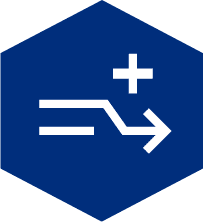Structure-Based Drug Design: Common Strategies
Analyzing the available information for the target in question is absolutely crucial for launching a structure-based drug design project. This analysis enables us to fully leverage the benefits provided by a three-dimensional structure, thereby significantly accelerating the drug design project.
Structure in drug discovery
The benefits of structure-based drug design became evident during the early days of protein X-ray crystallography (Blundell et al. 2006). Two classic examples include the structure-based discovery of the AIDS drugs Agenerase and Viracept, developed using the crystal structure of HIV protease (Lapatto et al. 1989, Miller et al. 1989), and the influenza drug Relenza, designed using the structure of neuraminidase (Varghese, 1998). However, at that time, most pharmaceutical companies were not convinced. They deemed the structure-based method too costly and time-consuming for industrial application, thus relegating the responsibility to academic institutions. The image on the right outlines the strategies and related services packages that can be considered in structure-based drug design.
How to plan a project?
Analyzing the information available for the target in question is crucial to kicking off a discovery project. The diagram on the right illustrates the diverse structure-based drug discovery and design project strategies.
- Protein structure known / ligand known – structure-based drug discovery (SBDD) is straightforward.
- Known protein structure / unknown ligand – virtual screening, fragment library screening, and subsequent verification and optimization using structure-based methods.
- Protein structure unknown / ligand known – possible to use ligand-based drug discovery techniques. The protein structure needs to be determined to realize the advantages of the structure-based method.
- Protein structure unknown / ligand unknown – de novo design, fragment library screening, high-throughput screening, etc. Also, in this case, the most optimal pathway toward using structure-based methods would be the crystallization and structure determination of the target.
The details of these options will be discussed below.

A structure-based drug discovery and design project strategy should be defined before starting the process. This includes considering the availability of structural data on the protein and its ligands. The image above briefly outlines the different options. For more details, please refer to the text.
Additionally, in several blog posts we discuss the applications of structural biology and structure-based drug design, starting from hit identification to lead generation.
Structure-based drug discovery & design
The blue quadrant offers the most straightforward approach, leveraging the structures of both a ligand and the protein target for efficient structure-based drug discovery (SBDD). The structure of the bound ligand allows for the construction of a pharmacophore model, enabling the application of computational methods, virtual screening of fragments and larger compound libraries, and assessment of compound binding using docking methods. Our services also provide the option to screen compounds using biophysical methods or our proprietary weak affinity chromatography (WAC™) technology.
Upon identifying new hits, we verify binding details using the protein-ligand complex structure determined by X-ray crystallography or NMR spectroscopy. Hit identification, lead generation, and optimization necessitate repeated cycles of X-ray structure determination of the target protein with bound compounds. SAR (Structure-Activity Relationships)- based methods analyze and compare multiple hits and play a crucial role during lead optimization. Our services are tailored to deliver optimal and efficient performance independently of the specific nature of the project.

Structure-Based Hit to lead & lead optimization
At SARomics Biostructures, the service package, which includes structure-based hit-to-lead and lead optimization, is run in close collaboration with Red Glead Discovery. After identifying an active fragment (or fragments), structure-based optimization of the interactions with the target protein (hit expansion & lead generation) is made to obtain more efficient binders. Multiple protein-ligand complex structures and SAR modeling of the compounds provide detailed mapping of the binding site used in designing new compounds. Structure-based hit-to-lead optimization typically requires several cycles. The result may be a series of compounds, which will generate the final lead after further optimization and testing.
SARomics Biostructures’ fragment screening and structure-based drug discovery and design services are adapted to each project’s needs and customer requirements. Please do not hesitate to contact us to discuss your project.






